Press Play: Back To The Rivers Of Believe: Way To Eternity/Hallelujah/The Rivers Of Believe
Wednesday April 18th 2018
Real Life Heroes
It’s not often you get to meet your heroes. Its even less seldom that you become friends with your heroes. I’ve gone through many iterations of who I am over the years. Each new experience bringing to light a new view of the planet and how one small person can make a huge impact. All through my life I’ve had a surreal feeling of living in a dream. The habits that make us walk through our daily routine on autopilot without questioning why we are the people we become sing a seductive lullaby. This is punctuated by catalysts that shake me into periods of being awake, aware, and purposeful.
It’s hard to predict falling asleep because you’re not aware of it while it happens. I feel this is a modern dilemma which plagues many of the deep thinkers of our time. The comfortable embrace of forgetting introspection, and continuing to stimulate our senses rather than our mind, or that intangible spark which ignites our spirit into active engagement. In the spring of 2015 in many ways I was asleep. I’d done years of work for many Ralph Nader organizations and volunteered in my local community. I’d been a public speaker for the families of minorities shot by Austin Police Department officers under questionable circumstances. Speaking at City Hall, the Human Rights Commission and the State Capital about the ethical use of tasers, and the divide between east side grottos and law enforcement, I did my best to become involved and make a difference adding honesty and truth to the public dialogue. I’d studied environmentalism and to a small degree, sustainability. But, nothing could prepare me for how much taking Dr. Robert Young’s Green Cities course at UT Austin would change, and evolve my perspective.
I had the type of arrogance which comes from too often being a big fish in a small pond. I was used to being the most outspoken person in the room, and the one most engaged in realistic practicalities for, well, not just complaining about the woes of the world but finding a real solution. When selecting this course, it was not done with much forethought, I just knew I needed a Signature course for my degree requirements. I really liked the name “Green Cities,” it appealed to my love of nature. My curiosity was peaked, so I thought, “Why not? Let’s explore!”
First Day Of Class
I remember the first day of class, January 20th I think, 2015. Dr. Young’s classroom was held in kind of a basement floor of a pharmacy building on campus. The feng shui was less than ideal. I walked in, with my REI backpack full of notebooks, and slid into a seat midway between the front row and the back row. Dr. Young began speaking about the basics most classes covered. Then he got into the course curriculum. I was struck by how relevant, dynamic and interesting everything he was saying was. Dr. Young seemed to know what he was talking about on more than a purely academic level. I was intrigued.
After class was over, I approached Dr. Young and introduced myself. I gave a short synopsis of some of the volunteer work I’d done and how fascinated I was with his class. He was short with me and reserved, not really knowing who I was and if I was just another student who was going to drop out in the first 3 weeks of class. Curiosity, and a genuine interest for where this class was going made me eager to attend the next. Over the course of the next couple of months, my appreciation for Dr. Young and what he was teaching grew immensely. We eventually moved to the Sutton building and got a much better classroom.
I met some of the other students in his class and there was quite a range of people who were taking his course. I made a couple of really good friends who changed my life for the better many months and years later. This is the course description from the syllabus:
This course examines the history and future of the ecological city and the technological and social forces that continue to shape it. Metropolitan transformation is explored in conjunction with alternative transportation, renewable energy, green infrastructure, recycling and resource management, and sustainable economics as means toward advancing cities to become the basis of an ecologically sound and socially just society.
The first part of the course introduces students to the long, but often overlooked, history of environmental city development in the western planning tradition. Specific emphasis is placed on the classic period as well as 19th century garden city planning and encompasses early efforts to establish solar design, mass transit, and green infrastructure as the basis of urban systems that still inform contemporary green city strategies.
The second part of the course reviews present-day efforts to apply these approaches in the face of modern metropolitan challenges to creating ecologically responsible cities. Specific case studies are studied within the theoretical context and political struggles that frame them.
Required Reading:
Civilizing American Cities – Olmsted (Sutton-ed.), Da Capo Press
Garden Cities of To-Morrow – Howard, MIT Press
The Great Financial Crisis: Causes and Consequences – Foster and Magdoff, MR Press The Ecology of the Automobile – Freund and Martin, Black Rose Books
The Big Picture
Each successive class, more of the big picture became clear to me. Much of the work I’d done in the previous years laid the groundwork, on top of which Dr. Young built a magnificent shining city of sustainability, agriculture, economics, and urban planning. The group discussions were animated and full of insight. I learned that Robert created a company called American Soil and was instrumental in helping America set up recycling systems and much of his passion came from practicing what he preaches. I expressed this feeling of admiration and being able to connect the dots in an email I sent him the 2nd month of class:
Thursday, February 12, 2015 11:30 PM
Subject: Re: Toronto’s Ecology Park Today
Hey Dr Young, I was just thinking about your class, it was such a random choice, after being forced
One Person Actually Can Make A Difference
Hip Hop Scholar
Unforgettable Moments
Green Cities
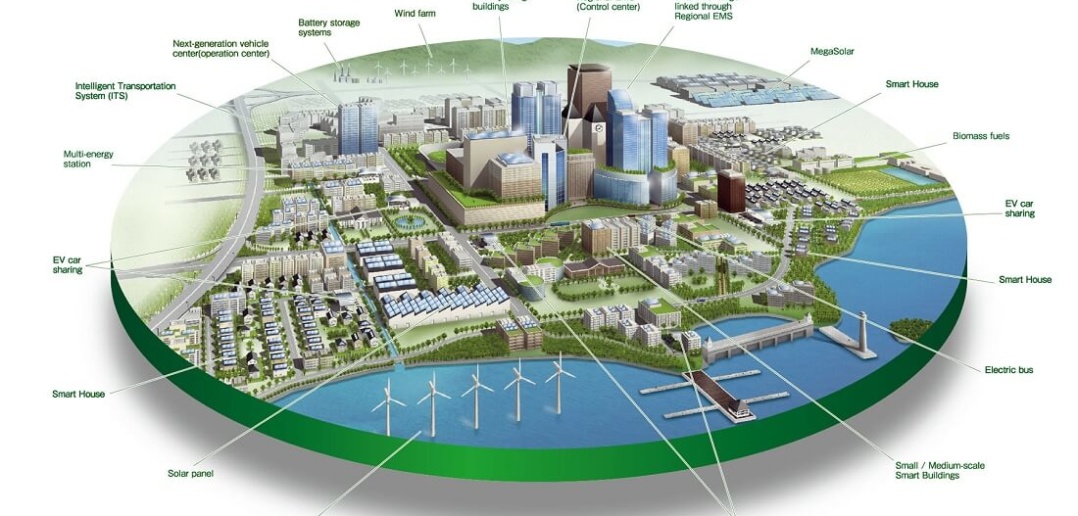
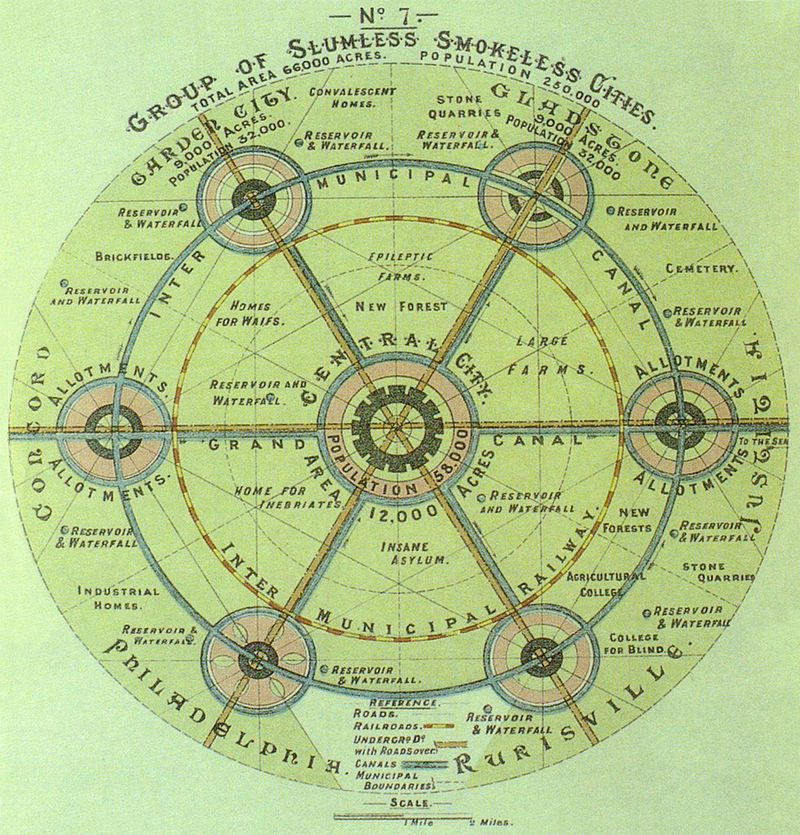
A green city is a city that manages resources cyclically for renewal and regeneration, thus improving the prospects of peace. Note, this does not mean it is completely self-sufficient or autarkic, i.e. it is self-sufficient to the degree that it never engages in any trade or produce tradable surpluses. It does mean that it has set up systems for the responsible management of its own resources such that they are enhanced or made continually available rather than consumed and destroyed.
The Feeling Beneath It All
The energy that vibrated in that class was something beautiful to witness and it changed my life forever. Finally, I understood feasibly, how we can create a better planet, a practical utopia. The tempting cynicism of the current times was pushed at bay, and I could finally hope again. I wasn’t some idealistic but a catalyst for change. When the semester ended, I made it as clear I wanted to stay in touch with Robert and find some way to help him create the reality of Garden Cities. D and I became much closer friends than I think either of us had expected. She is super intelligent, majoring in engineering but also interested in the esoteric. We introduced each other to new reading material and concepts. Some of the things we talked about in deep conversations at coffee shops changed my life, and helped to evolve how I saw the world. We both shared Dr. Young’s sincere feeling that we too can improve the planet and that it’s worth caring about, in our own unique ways.
Green Cities Epilogue
Dr. Young and I met several times after the Green Cities course concluded. While he gave me an A, I did not do so well in Geographic Information Systems, and Spanish. I became academically dismissed and could not continue my education at UT until the fall of 2018. We touched base every few months at the Crown and Anchor, having a beer and some black bean tacos while discussing how we could work together. He also kept me updated on his adventures, meeting with the Waller Creek Conservatory for something that I think was going to be kind of like a winding greenbelt through the city (Waller Creek stretches pretty far distances across Austin). It was always a treat to see Robert, we’d catch up about our lives, and world issues. He told me about his peripatetic since of wandering, and not being sure if Austin was a city that he wanted to live in. But when his wife Katherine, got tenure at UT, that solidified Austin as his home base. Dr. Young didn’t know what to make of this, and we commiserated about gentrification and hipsters. Being a Native Austinite, I championed my city to him and let him know that he would grow to love this city too.
We would communicate through emails fairly frequently. He used to have a phone but he got so frustrated with it, not being too hip on modern technology, that after leaving it at an airport accidentally, he just swore off having another cell phone. Getting in touch with Robert was a task as I’d have to wait until he checked his email or hope that he’d be around his office at UT to answer. In August last year I watched a Ted Talk one time where the founder of Lyft was telling Tony Robbins about how Robert Young inspired him to create Lyft and emailed Dr. Young excitedly:
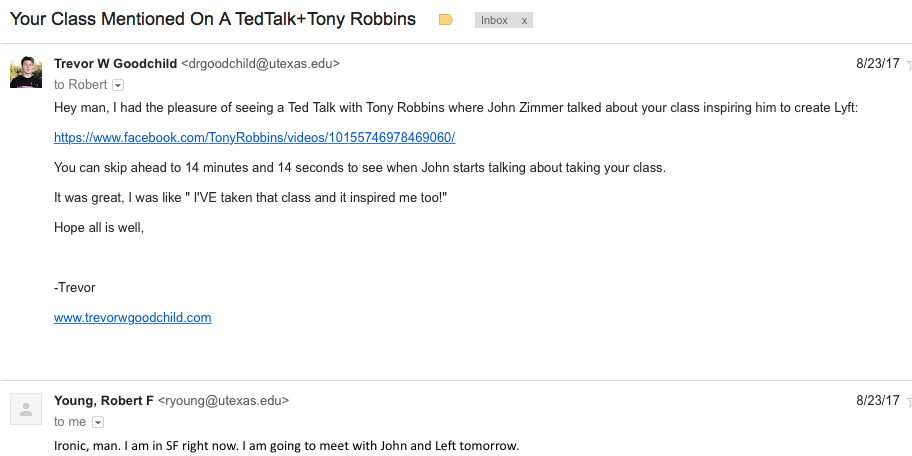

The Last Supper
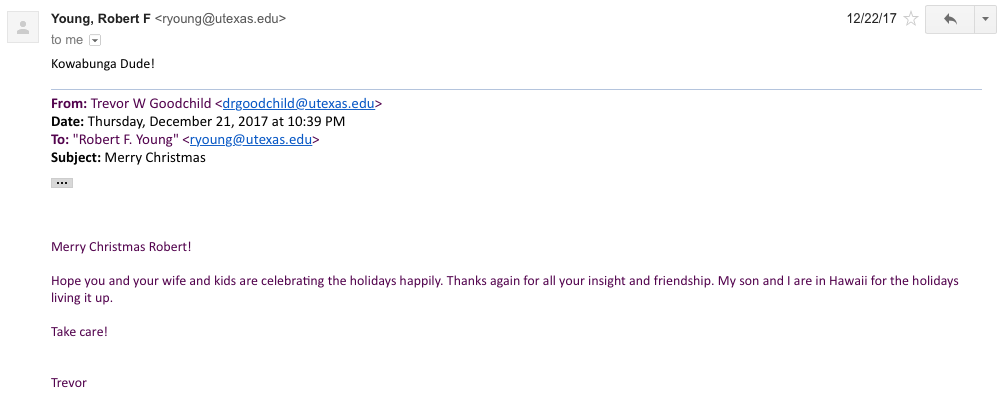
Coping With It
I cannot describe what this man meant to me to ever fully give him justice, Robert Young, more than just the professor of the Green Cities UT course i enrolled in, was a mentor, an inspiration, a dreamer who made those dreams come true.
A man who not only motivated John Zimmer to create Lyft who took the same Green Cities course i was in, but also created the foundation to the recycling program America uses. Robert Young passed away January this year I just found out today.
I loved him like family, I wouldn’t be the man i am today without his positive influence.
Dr. Young changed so many lives for the better with his burning passion to help this world become a better place through city planning, economics and the sustainable architecture of Garden Cities.
His sincere desire to enrich the lives he touched with the knowledge, energy and realistic blueprints gave the gift of faith and hope in his beautiful vision of the future. My heart goes out to his surviving wife and children.
Dr. Young and I met several times in the years after I graduated his course and made many plans to change the world together through Green Cities and the community of talented professionals who took his course.
I stay committed to his vision, and will dedicate my life to helping to make this a reality. The world has lost one of the greatest people to ever walk this planet but i will never forget his words, his wisdom, and the fire that burned so true inside his soul.
The last time I saw Robert we had dinner together at my townhome and strategized future plans to bring people together, and create a Green Cities intelligentsia to change the world, by augmenting various strengths of each individual has towards creating an organization comprised of those who shared the passion for bettering the planet through sustainable city planning, architecture, permaculture, IT, social networking, economics, transportation, solar power, urban ecosystems and global interdependence
This photo was taken that night, may peace
be with you old friend.
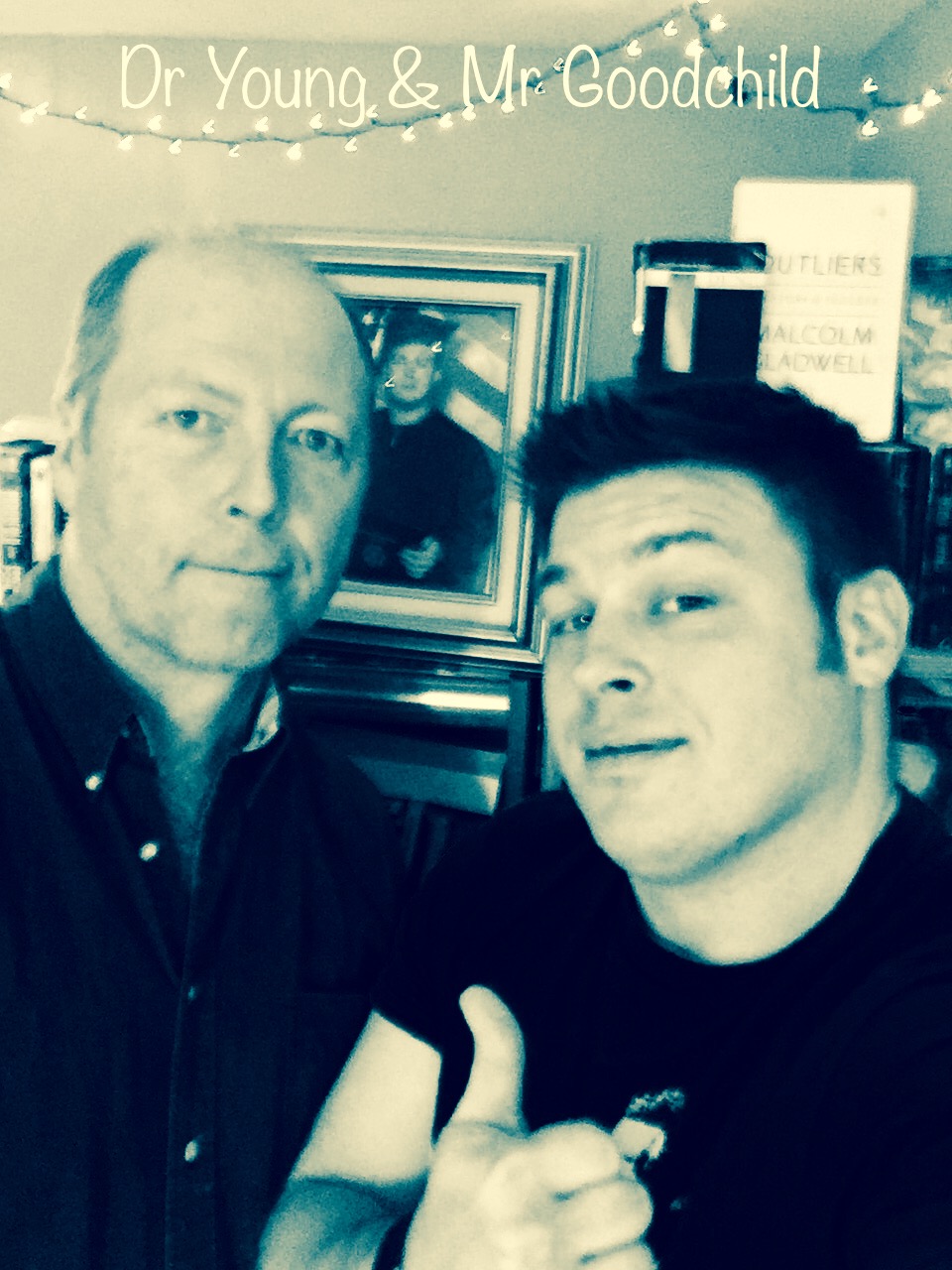
Tree Planting Ceremony
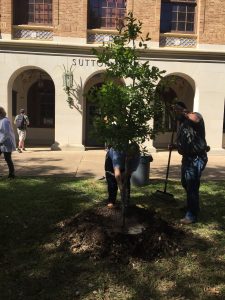

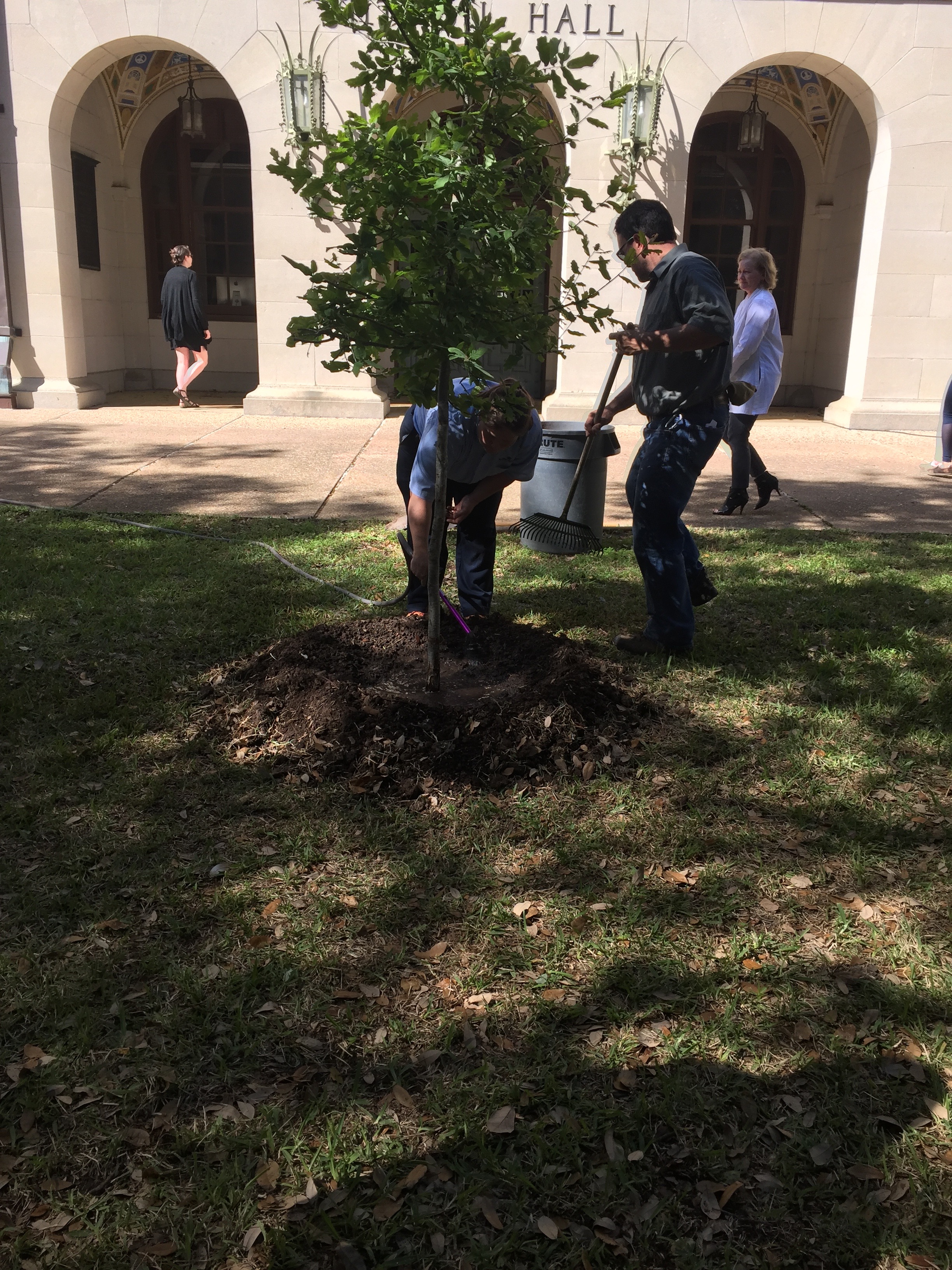
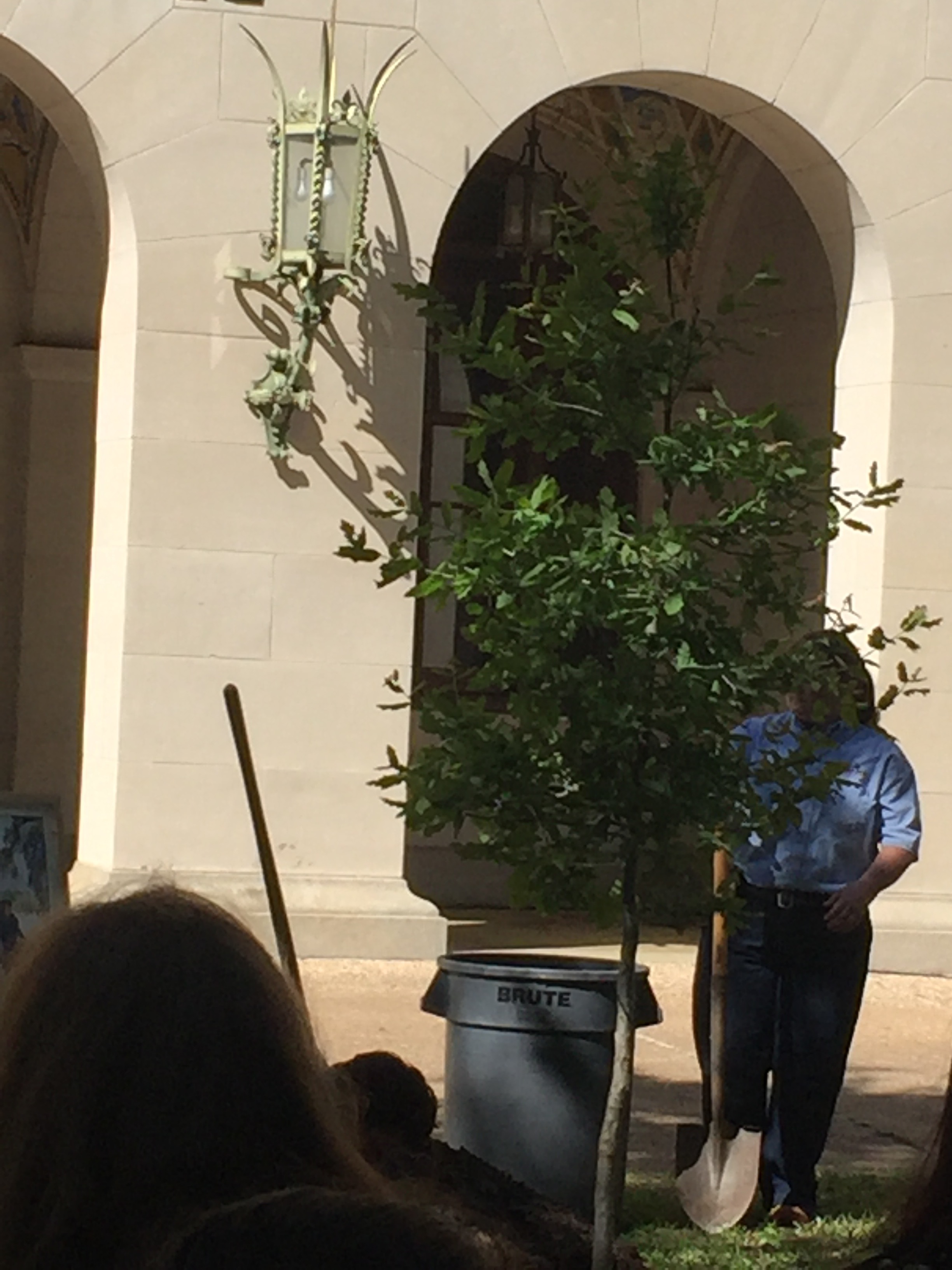

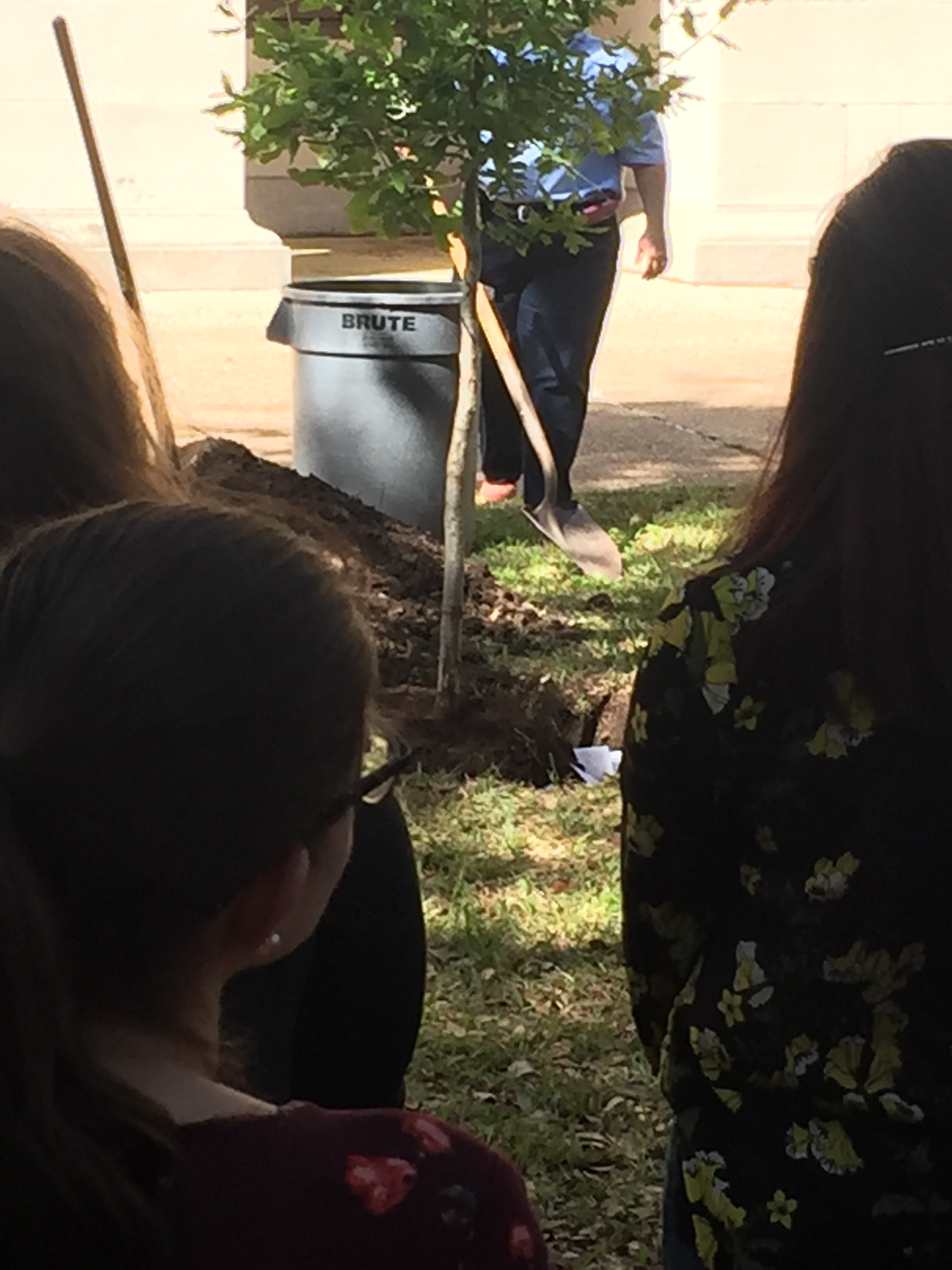
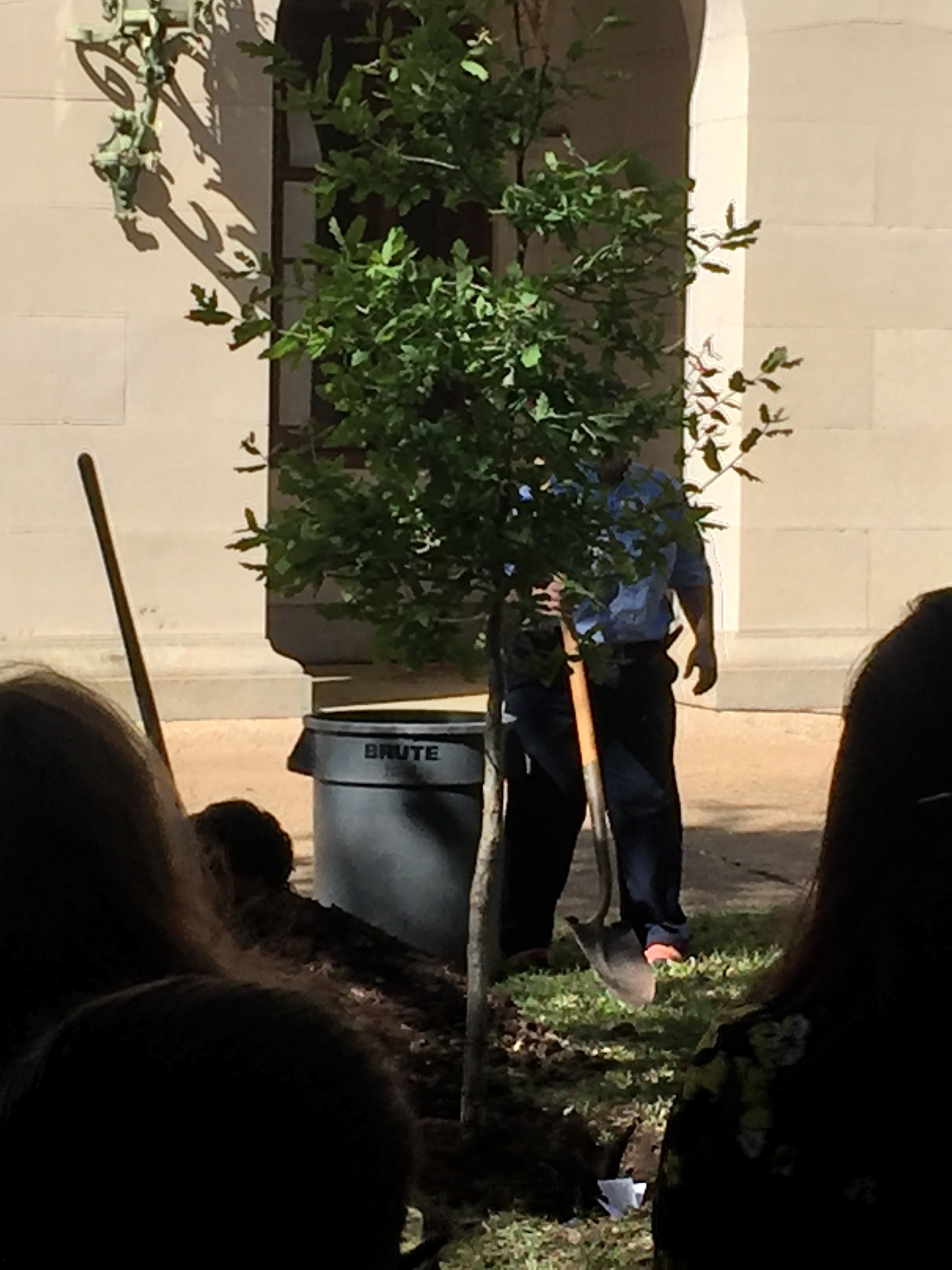
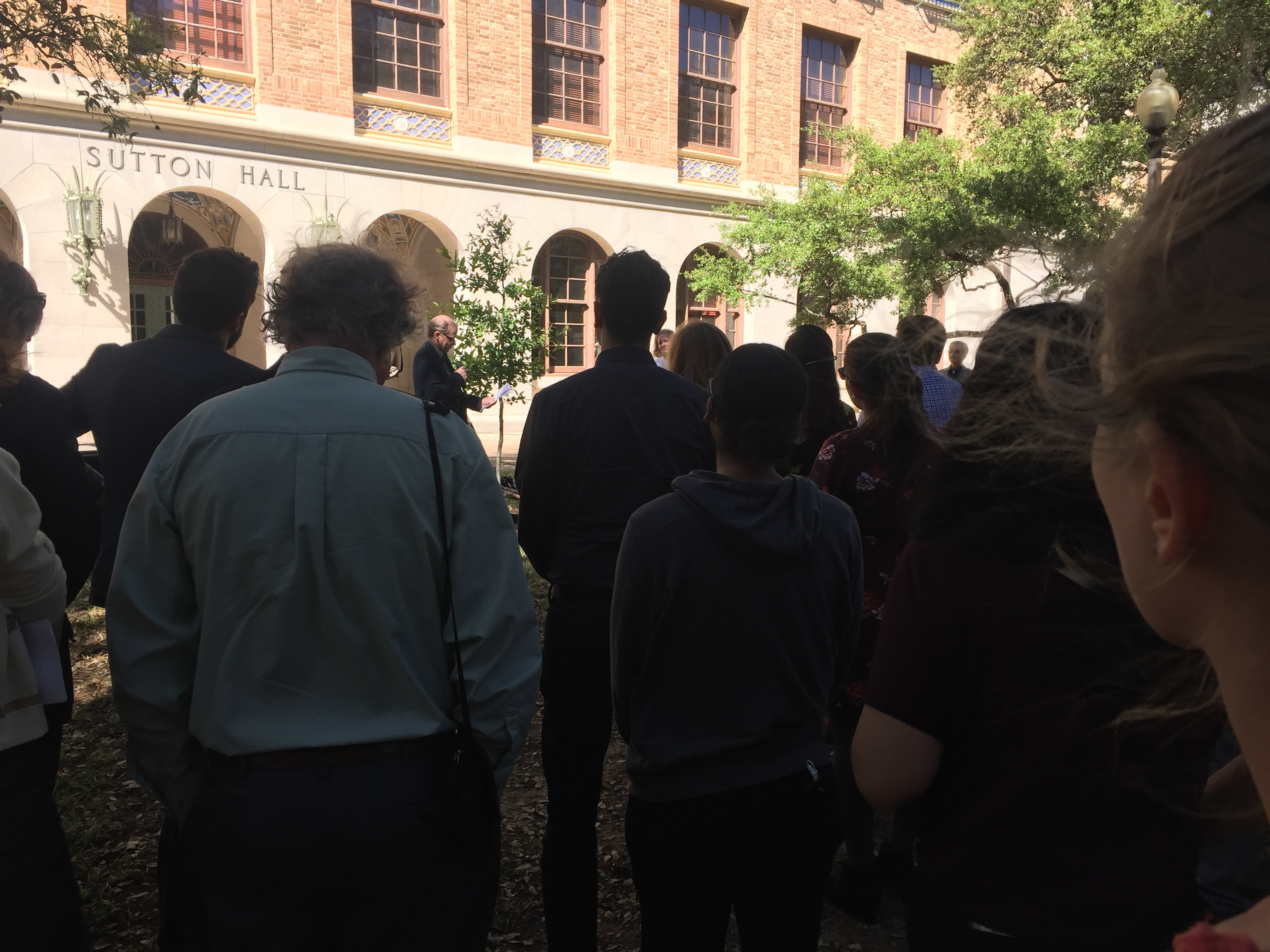

Robert’s Future
Drinking a beer and walking slowly around the room, circling back to the table my friend D. was standing at, I was filled with sadness but also hope.Hope that I am a good enough person to help manifest Robert’s vision of sustainability. I emailed him when I recently finished writing my first book, on personal development, because his approval meant just as much to me as blood relatives.I don’t have a pithy platitude to make the loss of Rob any more bearable but over time a perspective develops. Instead of sadness, I’m gradually starting to feel more and more gratitude that I was lucky enough to meet Dr. Robert Young. You only get to meet a person like that once in your lifetime. The lessons of interdependent relationships between agriculture, transportation and city planning and the forever shining hope in his heart I share with my son. I’m grateful to have been there at the right time, to have felt his sincere caring for the planet and the people who live on it. And I’m grateful for the chance to pay it forward, however I can.
-Trevor
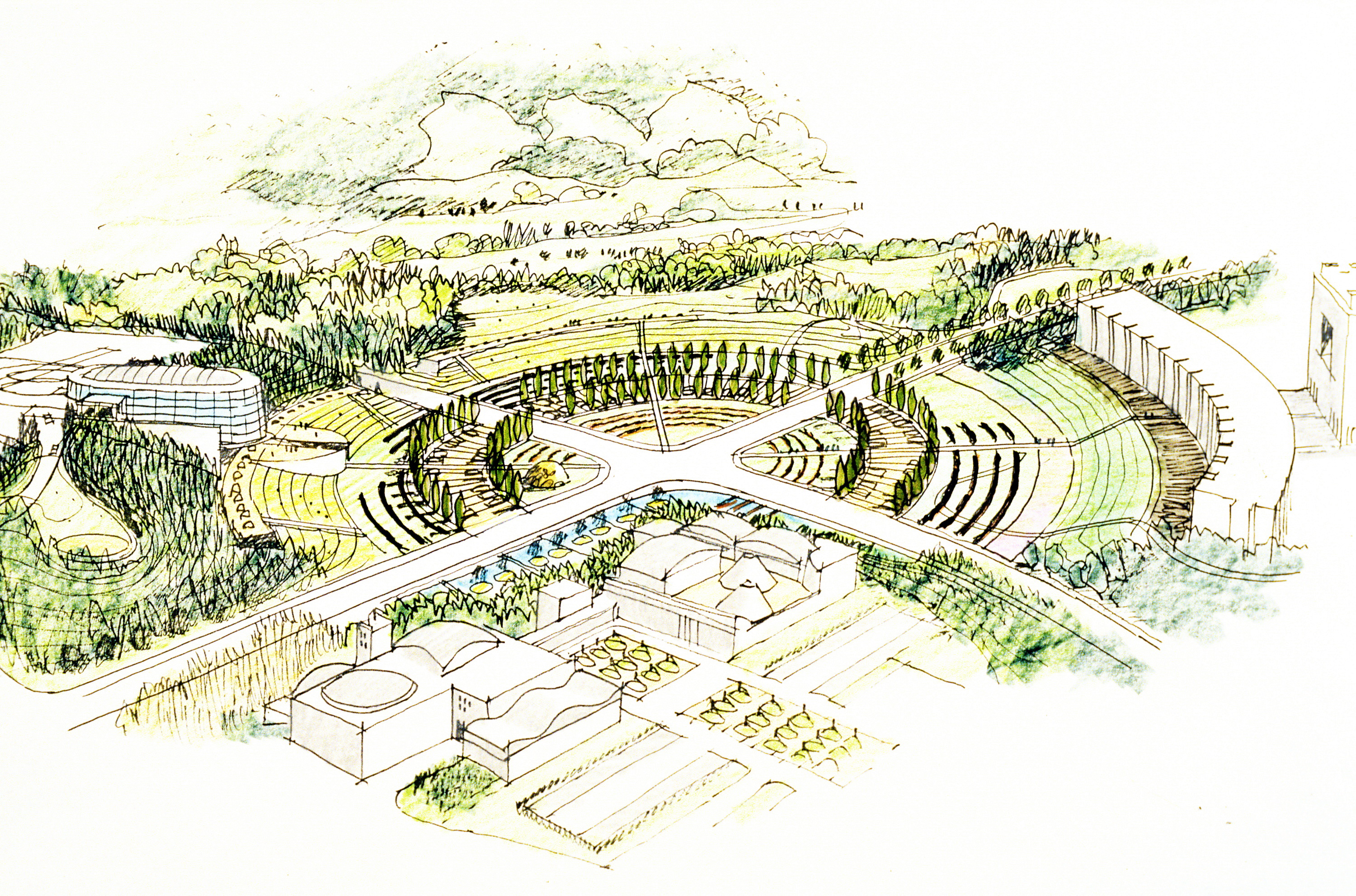





Leave a Reply
You must be logged in to post a comment.